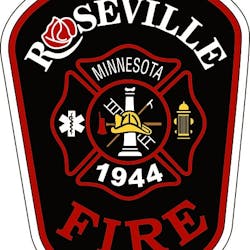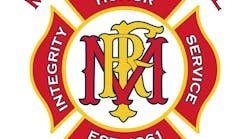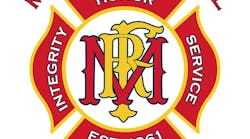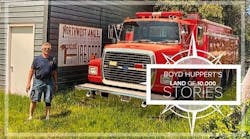The Roseville Fire Department got two calls the day after Christmas, one right after the other.
It was a scenario Chief Tim O’Neill had been dreading since the department started winnowing its larger part-time staff in favor of fewer full-timers.
Technically, he was on vacation, as was one of his full-timers, leaving him with four firefighters on duty to cover two possible structure fires.
Which fire should he send them to?
He chose the townhouses at 514 Lovell Ave. because the caller could confirm there were flames.
As for the Rose Mall apartments at 2221 Albert St., he called Falcon Heights for backup. That caller had described smoke filling the apartment. He knew Falcon Heights would do a good job, but he also knew its response time would be longer than Roseville’s usual 3.5 minutes.
Fortunately, he made the right call. The apartment smoke was just someone’s burned lunch. There were no injuries. The fire at the townhouse, however, destroyed the unit.
Had a third call come in that day, there would have been no one in the Roseville fire station to answer it.
“On average, seven times per day the department does not have an available unit to respond to the next emergency,” O’Neill said. “I don’t want to cross my fingers anymore. I want to have adequate staffing.”
He has asked the city council to find an extra $1 million in the budget so he can hire nine more full-time firefighters as soon as possible.
How did the Roseville Fire Department get to this point?
Phase 1, which started in 2014, was to slowly deplete the department of its 70 part-time firefighters and replace them with five full-time firefighters for each of the three shift cycles.
O’Neill figured it would take at least 15 years for this phase to complete. He chose to let the part-timers go by attrition rather than with a pink-slip tsunami, something he felt would dishonor those who’d given years of service.
The part-timers, however, saw the writing on the wall and decided not to wait around.
It took just four years for O’Neill’s part-time pool to drain down to 19. He expects it to be in the single digits next year and by 2022, to be completely dry.
Fifteen years would have given him plenty of time to slowly build up his full-time crew to the 24 that he’d planned on.
Most departments increase their budgets $50,000 at a time, O’Neill said. It’s gradual and less painful for taxpayers. But after the incident Dec. 26, he decided he couldn’t wait any longer.
O’Neill’s presentation to the city council Jan. 7 was researched and stacked with statistics.
In 2006, the department was answering just under 1,000 calls a year. By 2018, that number had jumped to 5,000, but the staff and apparatus stayed the same.
Roseville firefighters don’t just go to fires, of which they have an average of 12 per year. They respond to medical situations and car crashes and do 550 inspections and 500 community events per year.
During a shift cycle, the four or five full-time staffers answer about 14 calls per day, do two to three hours of inspections, attend about two hours of training and attend community events in the evening.
Not counting Minneapolis and St. Paul, Roseville ranks seventh in the Twin Cities region for call volume. Of those seven, it is the only city that does the work with an average of four on-duty staffers.
Most, such as Brooklyn Park, Coon Rapids and Edina, have at least six.
Besides the numbers, O’Neill said, Roseville is a “complex” city. It’s only 13.84 square miles in size, but its population of 36,000 more than doubles during the day due to workers. It has manufacturing pockets with chemical and fuel dangers, three major highways, multiple apartment buildings and retail, including Rosedale Center.
“We are one of the most lean-staffed fire departments in the metro,” O’Neill said.
O’Neill has considered the options.
Using the resources of surrounding cities and the county to cover the gaps is happening far too often to be neighborly, O’Neill said.
“The foundation of each fire department is to handle the basic needs of the community first and ask for help when we really need it,” he said. “We can’t call them two or three times a day.”
Opening the department back up to more part-timers would be going backward. It wasn’t a fiscally smart business plan, O’Neill said, because training took up to two years and about $80,000, and the part-timers only worked about 14 months after training.
Keeping the status quo means firefighters are working round-the-clock, which can lead to fatigue and more turnover, O’Neill said.
“A firefighter works an average of 30 years,” he said. “They’ll never make 30 years at this rate. They are extremely busy. They can handle up to eight calls at night, which means they have to sleep on their day off.”
Assistant Fire Chief David Brosnahan said the current staffing level is unsafe for firefighters and residents. When the department gets to a fire, it has enough staff to either extinguish the fire or rescue people, but not both.
“I can’t tell you the size of the rock that’s in my gut when I have to make a choice of … whether to send people into a house or not, whether to suppress or perform rescue,” he said.
The department has been taking its case to the community for some time, explaining the reasons behind the switch to full-time employees. O’Neill said the response has always been encouraging.
On a feedback form, resident Gil Ward said he would support the extra staffing.
“I owe my life to the firemen who rescued me when I had a heart attack while skiing,” he wrote. “Please up the financial support of our fire department.”
Gordon Marten also supported the increase.
“Current excellent service requires future additional support to meet the needs of an aging population,” he wrote.
Mayor Dan Roe said he and the council were just as surprised as O’Neill to see the part-time pool shrink so quickly. He’s hoping to find the money, possibly phased in over time or allocated from other departments.
“I think the answer is we do need to address the staffing concerns from the point of view of the safety of the community and the safety and well-being of the firefighters,” he said. He hopes to begin addressing it within the next few months as the city gears up for its next annual budget.
———
©2019 the Pioneer Press (St. Paul, Minn.)
Visit the Pioneer Press (St. Paul, Minn.) at www.twincities.com
Distributed by Tribune Content Agency, LLC.






